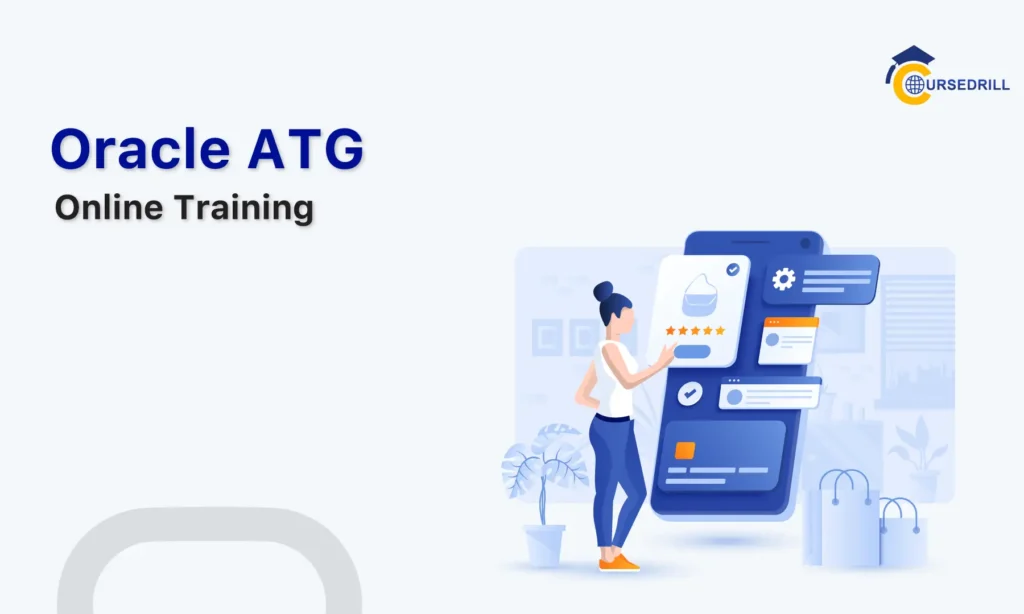- Posted on
- admin
- No Comments
Top 50 Software Design Interview Questions & Answers: Essential Guide for Developers
1. Core Design Principles & Concepts
1. What are the SOLID principles of object-oriented design?
Answer:
- Single Responsibility Principle: Each class should have only one specific responsibility.
- Open/Closed Principle: Software entities (classes, modules, functions) should be open for extension but closed for modification.
- Liskov Substitution Principle: Subtypes must be substitutable for their base types without altering the correctness of the program.
- Interface Segregation Principle: Clients should not be forced to depend on interfaces they don’t use.
- Dependency Inversion Principle: High-level modules should not depend on low-level modules. Both should depend on abstractions.
2. Explain the difference between coupling and cohesion in software design.
Answer:
- Coupling: A measure of how dependent one module is on another. High coupling means changes in one module are likely to affect others. Low coupling is desirable.
- Cohesion: A measure of how closely related the elements within a module are. High cohesion means a module focuses on a single task. High cohesion is desirable.
3. What is the purpose of design patterns?
Answer:
Design patterns are reusable solutions to common software design problems. They provide a vocabulary and proven structures for creating flexible, maintainable, and reusable code.
4. Describe the difference between a class diagram and a sequence diagram.
Answer:
- Class diagram: Represents the static structure of a system, showing classes, their attributes, methods, and relationships (inheritance, aggregation, composition).
- Sequence diagram: Represents the dynamic behavior of a system, illustrating the order of messages exchanged between objects during a particular scenario.
5. What is the importance of user stories in the software development process?
Answer:
User stories provide a concise and user-centric way to capture requirements. They help developers understand the needs and perspectives of the end-users.
II. Data Structures & Algorithms
6. Explain the difference between a stack and a queue.
Answer:
- Stack: Follows the Last-In, First-Out (LIFO) principle (like a stack of plates).
- Queue: Follows the First-In, First-Out (FIFO) principle (like a line at a store).
7. Describe the time and space complexity of common sorting algorithms (e.g., bubble sort, merge sort, quicksort).
Answer:
- Bubble Sort: Time: O(n^2) in worst case, Space: O(1)
- Merge Sort: Time: O(n log n) in all cases, Space: O(n)
- Quicksort: Time: O(n log n) on average, O(n^2) in worst case, Space: O(log n) on average, O(n) in worst case
8. What is a hash table, and how does it work?
Answer:
A hash table uses a hash function to map keys to indices in an array. This allows for very fast lookups, insertions, and deletions of data.
9. Explain the concept of recursion and provide an example.
Answer:
- Recursion is a technique where a function calls itself directly or indirectly.
- Example: Calculating factorial:
- Python
def factorial(n): if n == 0: return 1 else: return n * factorial(n-1)
10. What are trees and graphs, and how are they used in software design?
Answer:
- Trees: Hierarchical data structures with a root node and child nodes. Used in file systems, organizational charts, and more.
- Graphs: Collections of nodes (vertices) connected by edges. Used in social networks, routing algorithms, and more.
III. Software Architecture & Design Patterns
11. Explain the difference between monolithic and microservices architectures.
Answer:
- Monolithic: A single, large application that is deployed as a single unit.
- Microservices: A collection of small, independent services that work together to form a larger application.
12. What is the Model-View-Controller (MVC) design pattern?
Answer:
A software architectural pattern that separates an application into three interconnected parts:
- Model: Represents the data and business logic.
- View: Represents the user interface.
- Controller: Handles user input and updates the model and view accordingly.
13. Describe the Factory Method design pattern.
Answer:
Defines an interface for creating an object, but lets subclasses decide which class to instantiate. Lets a class defer instantiation to subclasses.
14. What is the Singleton design pattern, and when would you use it?
Answer:
Ensures a class has only one instance and provides a global point of access to it. Used for logging, configuration management, and other cases where only one instance is needed.
15. Explain the Observer design pattern.
Answer:
Defines a one-to-many dependency between objects so that when one object changes state, all its dependents are notified and updated automatically.
IV. Object-Oriented Programming (OOP) Concepts
16. What is inheritance, and how does it promote code reusability?
Answer:
Inheritance allows a class to inherit properties and behaviors from a parent class, reducing code duplication and improving maintainability.
17. Explain the concept of polymorphism in OOP.
Answer:
Polymorphism allows objects of different classes to be treated as objects of a common type. It enables flexibility and extensibility in software design.
18. What is abstraction in OOP, and how is it achieved?
Answer:
Abstraction hides the internal implementation details of an object and only exposes the necessary information to the outside world. It’s achieved through interfaces and abstract classes.
19. What is encapsulation, and why is it important?
Answer:
Encapsulation bundles data (attributes) and methods that operate on the data within a single unit (class). It protects the internal state of an object from unauthorized access or modification.
20. Explain the difference between an interface and an abstract class.
Answer:
- Interface: Defines a contract that a class must adhere to, but doesn’t provide any implementation.
- Abstract class: Can have both abstract methods (without implementation) and concrete methods (with implementation).
V. Database Design & SQL
21. Explain the difference between relational and NoSQL databases.
Answer:
- Relational: Data is organized into tables with rows and columns, based on the relational model.
- NoSQL: More flexible data models (document, key-value, graph, etc.), suitable for large volumes of unstructured or semi-structured data.
22. What are the ACID properties of database transactions?
Answer:
- Atomicity: All operations within a transaction are treated as a single unit.
- Consistency: The database must remain in a valid state after a transaction.
- Isolation: Concurrent transactions must not interfere with each other.
- Durability: Once a transaction is committed, its effects are permanent.
23. Write a SQL query to select all customers from the ‘Customers’ table where the city is ‘New York’.
Answer:
SELECT * FROM Customers WHERE City = 'New York';
24. Explain the difference between INNER JOIN, LEFT JOIN, and RIGHT JOIN in SQL.
Answer:
- INNER JOIN: Returns rows where there is a match in both tables.
- LEFT JOIN: Returns all rows from the left table and the matching rows from the right table.
- RIGHT JOIN: Returns all rows from the right table and the matching rows from the left table.
25. What are indexes in a database, and how do they improve performance?
Answer:
Indexes are data structures that allow for faster retrieval of data from a table. They improve query performance by reducing the need to scan the entire table.
VI. Software Testing & Quality Assurance
26. What are the different types of software testing?”
Answer:
Unit testing, integration testing, system testing, acceptance testing, regression testing, performance testing, security testing, etc.
27. Explain the concept of test-driven development (TDD).
Answer:
TDD is a development process where tests are written before the actual code is implemented. This ensures that the code meets the requirements and works as expected from the beginning.
28. What is the purpose of code reviews, and how are they conducted?
Answer:
Code reviews aim to improve code quality, identify potential issues, and share knowledge among developers. They are typically conducted through tools like GitHub, GitLab, or Bitbucket.
29. What are some common software development methodologies (e.g., Agile, Waterfall)?
Answer:
- Waterfall: A linear, sequential approach with distinct phases.
- Agile: Iterative and incremental approach focused on flexibility and customer collaboration.
- Scrum: A popular Agile framework with sprints, daily stand-up meetings, and a product backlog.
30. Explain the difference between black-box testing and white-box testing.
Answer:
- Black-box testing: Tests the software without knowledge of its internal structure.
- White-box testing: Tests the software with knowledge of its internal structure and code.
VII. Software Development Tools & Technologies
31. What is version control, and why is it important?”
Answer: Version control systems (like Git) track changes to code over time, allowing developers to collaborate effectively, revert to previous versions, and experiment with different approaches.
32. What is the purpose of a build system (e.g., Maven, Gradle)?
Answer: Build systems automate the process of compiling, testing, and packaging software. They improve efficiency and consistency in the development process.
33. What is the difference between REST and SOAP web services?
Answer:
- REST (Representational State Transfer): A simpler and more flexible approach using HTTP methods (GET, POST, PUT, DELETE).
- SOAP (Simple Object Access Protocol): A more complex, XML-based protocol.
34. What are some common cloud computing platforms (e.g., AWS, Azure, GCP)?
Answer:
- AWS (Amazon Web Services): A comprehensive suite of cloud services.
- Azure (Microsoft Azure): Cloud services from Microsoft.
- GCP (Google Cloud Platform): Cloud services from Google.
35. What is the purpose of a containerization technology like Docker?
Answer: Docker allows you to package an application and its dependencies into a container, ensuring it runs consistently across different environments.
VIII. System Design & Architecture
36. How would you design a high-availability system?
Answer: Employ techniques like load balancing, replication, redundancy, and failover mechanisms.
37. How would you design a scalable system to handle a large number of users?
Answer: Utilize techniques like horizontal scaling (adding more servers), caching, and distributed systems.
37. How would you design a system to handle large amounts of data?
Answer: Consider using a NoSQL database, data partitioning, and distributed storage systems.
38. How would you design a system to ensure data security and privacy?”
Answer: Implement encryption, access control, authentication, and authorization mechanisms.
39. How would you design a system for real-time communication?
Answer: Utilize technologies like WebSockets, message queues, and publish-subscribe systems.
IX. Behavioral & Soft Skills
40. Describe a challenging software project you worked on and how you overcame the challenges.
Answer: (Provide a specific example and highlight your problem-solving skills, teamwork, and perseverance.)
41. How do you stay updated with the latest technologies and trends in software development?
Answer: Reading technical blogs, attending conferences, taking online courses, contributing to open-source projects.
42. How do you handle conflicts with other team members?
Answer: Focus on open communication, active listening, and finding mutually agreeable solutions.
43. Describe your preferred work environment and team culture.
Answer: Be honest about your preferences, such as a collaborative environment, flexible work hours, or opportunities for growth.
44. Why are you interested in this particular role and company?
Answer: Research the company and role thoroughly and tailor your answer to demonstrate your genuine interest and fit.
X. Advanced Topics
45. Explain the concept of asynchronous programming.
Answer: Asynchronous programming allows tasks to run independently without blocking the main thread, improving performance and responsiveness.
46. What is the difference between synchronous and asynchronous communication?”
Answer:
- Synchronous: Requires both sender and receiver to be active simultaneously.
- Asynchronous: Allows communication to occur at different times, providing more flexibility.
47. Explain the concept of distributed systems.
Answer: Distributed systems consist of multiple independent components that communicate and coordinate with each other to achieve a common goal.
48. What are some common security vulnerabilities in software systems?
Answer: SQL injection, cross-site scripting (XSS), cross-site request forgery (CSRF), denial-of-service (DoS) attacks.
49. How do you approach learning and solving complex problems in software development?
Answer: Break down problems into smaller, more manageable parts, research and learn from available resources, and experiment with different approaches.
Popular Courses



